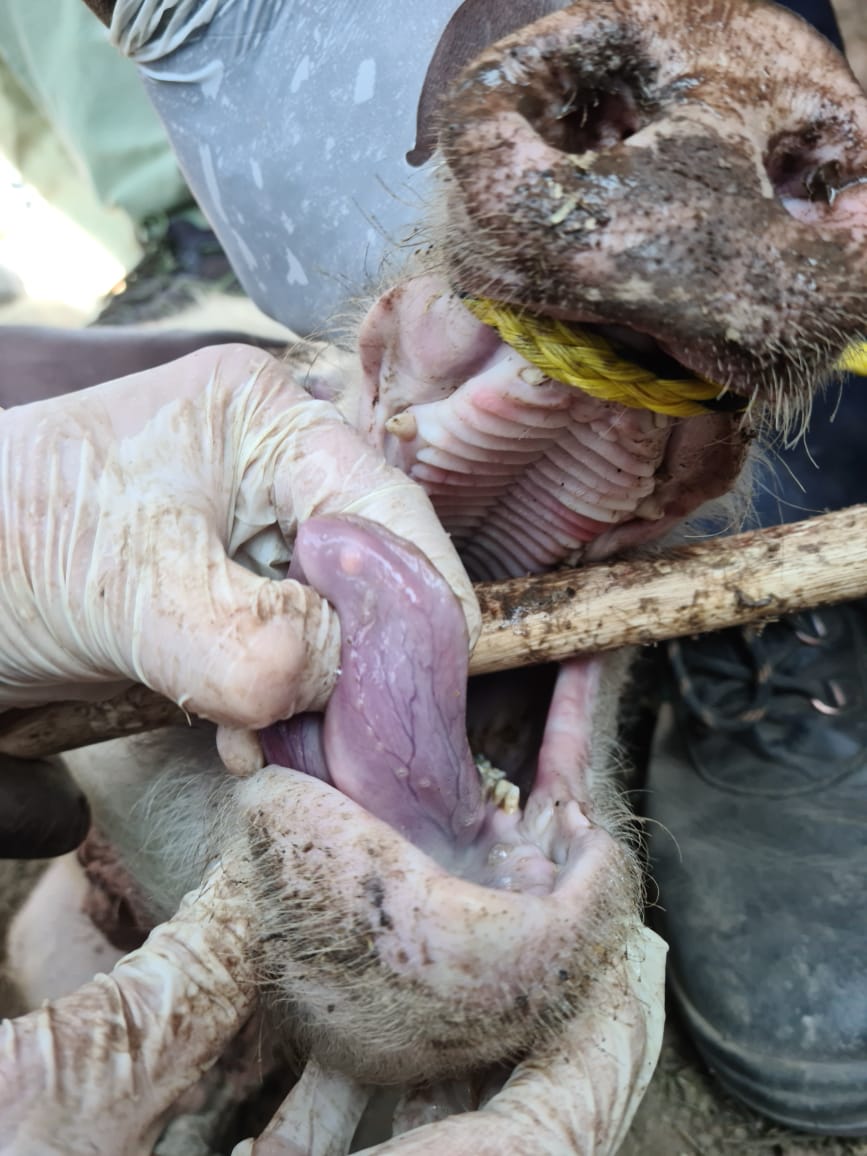AGRICULTURAL NEWS - Neurocysticercosis (NCC) is a human neurological disease caused by the tapeworm, Taenia solium. The natural life cycle of T. solium includes humans as final hosts (known as taeniasis) and pigs as intermediate hosts (cysticercosis).
The transmission from pig to human is through the ingestion of encysted larvae in undercooked pig meat; however, NCC develops when humans become accidental intermediate hosts through the ingestion of eggs via a faecal-oral route or from a contaminated environment, allowing the larval stage to develop and migrate to the nervous system.
This is a global disease of resource-poor, rural communities and in the Eastern Cape Province of South Africa there are a high number of clinical cases presenting as epilepsy in children and adults. (1) In fact, Neurocyticercosis is responsible for causing more than 60 % of cases of epilepsy in young people in this province.
“In 2021, Afrivet initiated and funded a pilot intervention project to tackle cysticercosis and NCC in an Eastern Cape village, with the recommendation that the region’s state veterinary services continue with the protocol in the long term”, says Dr Caryn Shacklock.
A population of free-ranging pigs was identified in the Upper Gxulu community in the Keiskammahoek region of the Eastern Cape Province of South Africa.
Several community-engagement meetings were held to educate the pig owners and obtain their consent for the proposed intervention project (2), and to provide feedback and recommendations afterwards.
A team, which included Afrivet representatives, the state veterinarian and animal health technicians from the local state vet office, as well as members of the Upper Gxulu village, embarked on an NCC- intervention program in June of 2021.
105 pigs that met the criteria for eligibility for vaccinations (2) were given a 1ml of Cysvax (a vaccine against T solium in pigs) via deep intra-muscular injection and subjected to lingual palpation to inspect for the presence of T. solium cysts.
Five weeks later, in August 2021, the team returned to the village to administer a second dose of Cysvax to the pigs, as well as a single dose of Paranthic, which is an oxfendazole product effective against the encysted larvae of T. solium, at an oral dose of 30mg/kg. (3) The pigs were marked with an ear tag at each treatment so that fully vaccinated pigs were easily identifiable.
A further 76 pigs had reached the age of eligibility for the first vaccination while the team was in the community in August 2021, so this was administered, and the state veterinarian committed to return to the village to follow up with the second dose of vaccine and the dewormer.
In June 2021, before the program commenced, ten pigs were selected at random from willing sellers and purchased by Afrivet for slaughter at the East London abattoir. The carcasses were inspected on the slaughter line using routine meat inspection protocols.
This was repeated in February 2022 with 9 pigs that were marked with 2 ear tags each - indicating that they had received both doses of vaccine plus the deworming dose.
It should be noted that the gold standard for diagnosing cysticercosis in pigs is necropsy, with multiple incisions throughout the musculature of the carcass. (4) Logistics prevented the use of this technique at the time of the project.
During lingual inspection of the 181 pigs that received the first vaccination, 7 of the pigs each had a single, viable cysticercus in the tongue. One carcass from the unvaccinated group that was slaughtered at East London abattoir before the commencement of the program in June 2021, was condemned with focal cysticerci in the tongue and triceps muscles.
Incidentally, all but 1 of these unvaccinated pigs had multiple hydatid cysts in the livers and lungs from Echinococcus granulosus and T. hydatigena infections.

In February 2022, 9 treated pigs were purchased for slaughter and meat inspection. There were no T. solium cysts noted in the vaccinated pig carcasses inspected, and only a small number of non-viable hydatid cysts in the livers and lungs of 5 of the pigs.
Dr Caryn Shacklock reports that “Between 4% and 10% of the pig population that was subjected to lingual or meat inspection was positive for cysticercosis. It can be concluded that T. solium is a problem in the pigs in this community.”
It has been proposed that an animal health strategy aimed at treating only cysticercosis in the pig population - if carried out responsibly and consistently - can effectively eliminate the associated human NCC disease in a community in 3 years.
(5) The apparent reduction in viable cysts in pigs treated with the vaccine and oxfendazole product confirm the efficacy of the proposed protocol, and, if the Eastern Cape veterinary services can incorporate this protocol into a primary animal health care program, a positive impact on human health can be expected in the near future.
Acknowledgments
- Afrivet Business Management (Pty) Ltd
- Dr Cebisa Mnqeta and Dr Lindsay Biggs -DALRRD
- Dr Meritxell Donadeu and Prof Marshall Lightowlers
- The Upper Gxulu and Upper Mnyameni communities
References
- Mafojane et al., 2003. Acta tropica, 87, 25-33
- 2.Lightowlers, M., B. 2016. Parasite immunology, 38, 158-169.
- Ortiz, P. et al, 2014 Acta Tropica
- 4.Lightowlers, M. W. & Donadeu, M. 2017. Trends in parasitology, 33, 426-434.
- 5. Braae, U. C.,.et al. 2016.. PLoS neglected tropical diseases, 10, e0005184.
- 990 words

'We bring you the latest Garden Route, Hessequa, Karoo news'
















